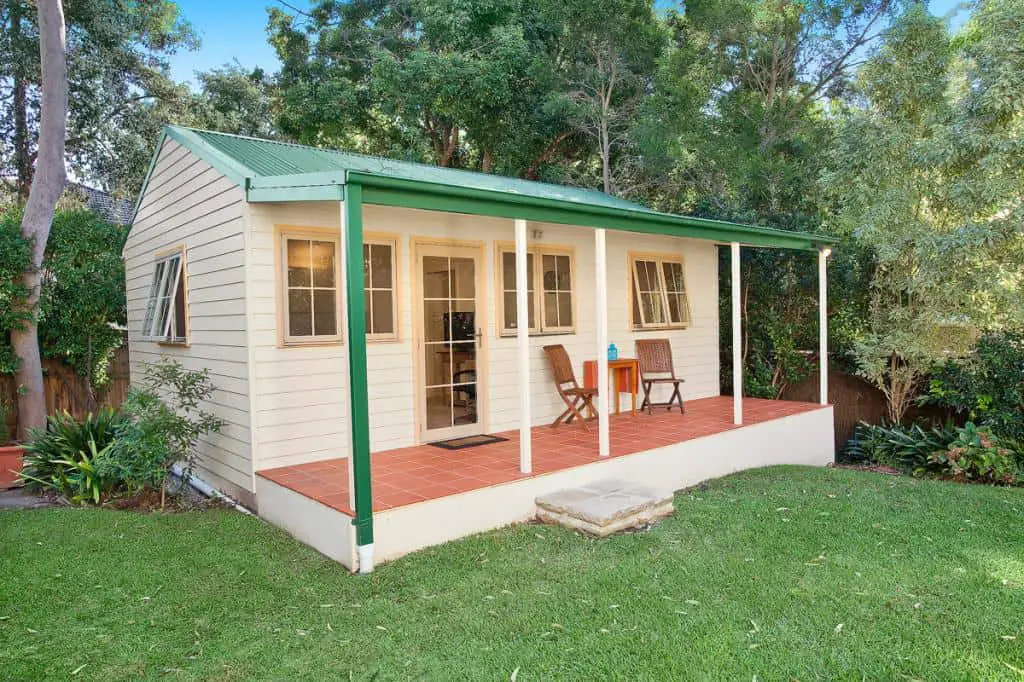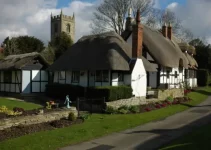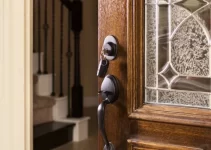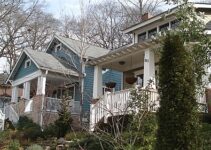If you’ve ever dived into building terminology, particularly around rural buildings, you might have come across the term “granny flat”. It’s a very British term that’s often used interchangeably with the term “cottage”.
However, this isn’t a completely accurate usage, as they’re not the same thing. In this article, we’ll cover the differences between a cottage and a granny flat to understand why.
First, it’s worth covering some definitions.
What is a Cottage?
You probably already know what a cottage is, but it’s reasonable to define it here so we’re all on the same page.
A cottage is typically a rural home that’s fairly small in comparison to a “normal” home. It’s characterised by its quaint appearance, which might include a thatched roof, whitewashed walls, and small windows.
Cottages have existed in the UK (and elsewhere) for hundreds of years. They’re the sort of building you’ll often see in rural English villages and on postcards or chocolate boxes.
What is a Granny Cottage?
A granny cottage (or, more commonly, a granny flat) is a self-contained living space attached to a larger family home. Often, a granny flat is designed for 1 or 2 people, meaning it has a single bedroom, 1 bathroom, and a small kitchen (if any).
Granny flats will often be extensions built onto an existing building. The purpose should be relatively obvious based on the name. A granny flat would be built (or converted) to allow the parent (or parents) of an adult to live in their home. It allows an elderly person to have their own space while being close enough to people who can provide them with support.

What Makes it a Granny Flat?
So, what makes a building a granny flat as opposed to a normal flat or a normal home? There are several key points in the distinction:
· Granny flats aren’t the primary residence on the property’s land.
· They’re small residential buildings either built as an extension or a standalone space in the grounds of the existing building.
· As such, they’re more limited on space but often provide all the necessary amenities. This includes a kitchen, bathroom, bedroom and living area.
· Depending on who the space is for, a granny flat might be built with accessibility in mind. For example, it’ll all be on a single level and might have support handles added for easier mobility.
· A granny flat isn’t the same as an outdoor office or studio or guest house. This is because it’s designed as a primary dwelling for a second resident rather than for occasional use.
The bottom line is that a granny flat is meant to have someone living in it constantly, and so has the appropriate level of amenities. That said, it’s not meant to be a primary residence for a whole family.

Cottage vs Granny Flat – What’s the Difference?
So, now that we have a better understanding of a cottage and a granny flat, what are the main differences between them? Here’s a roundup of the most obvious:
1. Size
Let’s start with the main difference: size. A cottage, although a small home, is still larger than a granny flat. Typically, a cottage will have 2 or 3 bedrooms, a kitchen, bathrooms, dining area and a living area.
They’re not the largest homes in the world, but are usually suitable for a family of 3 or 4 to live comfortably.
A granny flat, on the other hand, is meant for 1 or 2 people at most. It’ll usually have 1 bedroom, a bathroom, and a small kitchen and living area.
Think of it along the lines of a studio flat, as this is probably the best comparison.
2. Age
Granny flats are a fairly recent concept (the last 50 years or so). Second dwellings have existed as a concept for a long time, but it’s only in the last few decades that they’ve taken off as somewhere to house elderly parents.
In the old days, families would just move their parents into their main home.
Cottages, however, can be upwards of 600 years old. The British have been building cottages since the Middle Ages as somewhere for farmers to live.
Although not all cottages are this old, it’s common for them to be at least a century old. The concept and design have typically fallen out of popularity since then.
3. Building Materials
This relates to age but is worth mentioning on its own. Cottages are made from stone and wood with mortar and limewash. These are all traditional building materials.
Granny flats, however, will usually use cheaper and more modern materials. For example, they could be prefab kits made from metal sheeting and plasterboard.
Alternatively, they could be plastic, uPVC, or any other inexpensive building material.
4. Purpose
Both cottages and granny flats are designed for people to live in, so how does their purpose differ? It ultimately comes down to whether they’re primary or secondary dwellings.
Granny flats are built on the land of an existing property, whether separately or attached to it. As such, they’re considered the secondary dwelling rather than the primary one.
The technical name for this is an ancillary dwelling.
But what does this mean? Ultimately, the biggest difference is that the primary dwelling has post delivered to it.
It’s the primary dwelling’s address that shows up on registries. You can theoretically add granny flats to postal addresses, but there’s often no need.
5. Cost
It’s probably no surprise that there’s a difference in cost for a cottage vs a granny flat. We can’t really compare them on purchasing cost, as you won’t buy a granny flat separately from its primary dwelling.
Instead, we’d think about the construction cost.
There’s no set answer for this, as it depends on the size, materials, etc., but you should expect to pay a minimum of £50,000 to build one.
When you look at this alongside the purchasing cost of a cottage, you can see the difference. Depending on the area and age, you can easily pay £1 million for a cottage.
Again, building cost varies massively, but a rough estimate would be £1,500 to £3,000 per metre squared for a cottage.

Final Thoughts
As you can see, there are some important differences between cottages and granny flats.
Generally, you shouldn’t use the terms interchangeably, but you’ll often see granny flat used in relation to cottages. Next time someone uses the wrong term, at least you’ll be able to correct them!



